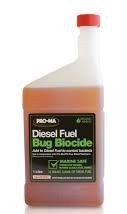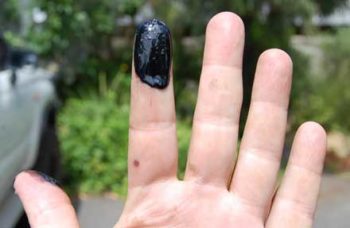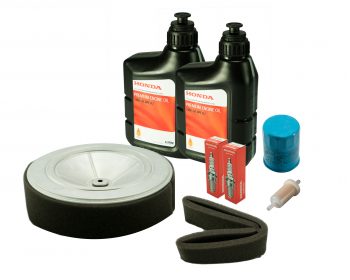
Generators are essential machines for both residential and industrial properties, particularly in remote areas of Sydney. They provide power backup during electrical outages caused by events like bushfires, and help you perform various tasks. However, generators can sometimes malfunction and require repair to function correctly.
Here are six common generator problems you might experience at some point during its lifespan and solutions for dealing with them correctly.
1. Battery Failure
One of the more common issues seen with generators, no matter what model, is battery malfunction. Generally, this is a result of human error. The electrical board may have been shut down intentionally so that the generator could be safely worked on. Fortunately for you, this issue can be fixed by merely checking your circuit breaker for the battery charger to see if it was flipped off. After it has been located, flip it back on, and the generator should now be operable again once the battery is charged.
If it’s not, then the culprit could be oxidised connections, The terminals connecting the battery to the generator may be covered in debris and dust, thereby preventing the battery from establishing a strong connection. For this problem, you’ll want to get a wire brush. Use it to scrub away any debris and rust that have built up on these terminals over time.
After performing this step, check to make sure the battery terminals are not loose. If they are, you’ll need to tighten them back up. If none of these steps works for your particular generator, you may need to have the battery replaced entirely.
By seeking professional generator repairs in Sydney, you can ensure that your generator works correctly when you need it most.
2. Coolant Leaks
Over time, excessive temperatures caused by an overworked generator can put a lot of wear and tear on coolant hoses. They are then much more prone to leaks, which you’ll want to address as soon as possible to prevent total failure. Fortunately, cooling maintenance for generators is not that hard to master.
What you’ll need to do is inspect your generator’s coolant hoses every year. Make sure they’re structurally sound and don’t have any visible signs of damage or are hard and brittle. If they do, you should proceed by installing a replacement set. These hoses are relatively inexpensive and aren’t that difficult to set up, no matter what type of generator you have.
You can also prevent coolant leaks by changing the coolant in these hoses periodically. For optimal function, check with the generator’s manufacturer to see how often they recommend flushing the old coolant and putting more in. Please do not use water as the engine will corrode excessively.
3. Fuel
When your generators fail to turn on, the fuel levels may be too low for the engine to respond. Although this happens to a lot of generators, it’s important to make sure your fuel doesn’t ever run out completely. If this does happen, it could cause air to get into the system and hoses, which is extremely time-consuming to get out.
Every time you go to operate your generator, check the fuel level gauge. It will be in plain sight and should be fairly accurate. You should also listen for low fuel level indicators. These will sound like an alarm, and you’ll need to act immediately to prevent doing irreparable damage to your generator.
Another issue your generator might experience is running out of fuel, even when the fuel level gauge indicates you have plenty of fuel left. If this happens, your fuel gauge is faulty and should be replaced by your generator service provider. You’ll then be able to resume assessing accurate fuel levels. Another problem is dirty or old fuel. If Petrol, replace the fuel every 12 months as it goes stale. If diesel, check it for algae attack – Biocide can be used. There are many brands available from your auto parts store
4. Insufficient Oil Levels
Like most people, you probably have a busy schedule. Remembering to maintain your generator’s oil levels probably isn’t at the top of your priorities list. However, when these levels aren’t sufficient, your generator may not even turn on. Then, if your oil levels get too low, you could cause permanent damage to the engine as it wouldn’t have proper lubrication.
To circumvent engine failure, always keep this lubricant at the right levels. Checking them isn’t that difficult, either. You’ll first need to identify the oil dipstick, much like you would with a conventional car. If the oil levels are below the full line, go ahead and add more fuel. It’s paramount that you use the same type of oil that was used before for safe, effective operation. You should also inspect the oil’s consistency and colour. If the oil looks dark and is rather sludge-like, it has gone bad. You can then respond by having your generator flushed entirely and then putting new oil in. We recommend changing your oil at least once per year or at the service time run interval.
5. Closed Shutoff Valve
When you’re not using your generator, it’s often recommended to close the fuel shutoff valve. This way, the generator doesn’t accidentally turn on when it’s not being used for extended periods of time. However, where a lot of generator users go wrong is failing to open this valve back up once the generator is taken out of storage. Then, the generator doesn’t ever turn on.
A simple way around this problem is putting some type of label on your generator, indicating that the shutoff valve is closed. Then, when you go to take your generator out of storage, you can flip the valve back open and have no problems getting it started after remaining dormant.
6. Dirty Air Filter
Generators are like cars. They need a clean air filter to screen out contaminants like dirt and debris. If this air filter gets too dirty, it can’t help your generator run efficiently. Dirty filters could even decrease your generator’s lifespan. Inspecting this filter should be done at least once every couple of months. If the filter is extremely dirty on both sides, try to find a replacement with the same dimensions. You might even consider installing a reusable filter so that you can save on replacement costs and avoid changing it often.
No matter what type of generator you have on your property, at some point, it will stop working properly. At least you’ll know how to fix it if you brush up on the generator problems mentioned above. Then, no matter what issues are thrown your way, you’ll know exactly what to do and can do it in a timely manner.
Need Generator Repairs or Services in the Sydney – NSW Area
Easy Powerlite Generators are The Premier Repair and Installation company in NSW, providing reliable generator services to homes and businesses across NSW. Understanding the needs of generator users in Australia, we offer a full repair and installation service. Whether you’re having generator issues, need to service your system, or want to install a generator system, we can help…because we’re “Powergen made easy.”





